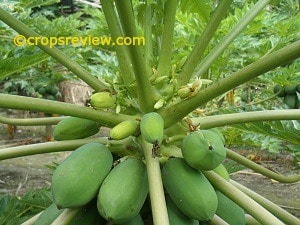Taking aside botanical issues, there are three types of sex in individual or solitary flowers:
(1) perfect, also called bisexual, hermaphrodite, and monoclinous flower;
(2) staminate or male flower;
and (3) pistillate, also called carpellate and female flower.
These are also referred to as modes of sexuality in individual flowers (Dellaporta and Calderon-Urrea 1993) or simply flower sex (Simpson 2010).

Both staminate and pistillate flowers are described as imperfect, unisexual, or diclinous.
The word “monoclinous” means that an individual flower has both male and female sexual parts.
But a “diclinous” (n. dicliny) flower only has one of the two.
In other words, a monoclinous flower has both, but a diclinous or unisexual flower has either a pistil (or carpel) or a stamen only.
The presence of any, or all, of these three flower types in an individual plant determines its (that single plant’s) sex type, or plant sex.
The distribution of these different flowers on the individual plants composing a plant population also determines the type of sex of that population
The table below provides a list of the terms which are commonly encountered in referring to individual plant sex and the types of sex of a plant species or any population.
The word population is here meant to refer to a group.
It can be the entire individuals under a plant species, variety, cultivar, any selection, or a larger grouping.
For consistency and to avoid confusion in the use of different terms when referring to the same flower sex, the terms hermaphrodite, staminate (male flower), and pistillate (female flower) are used in this list.
Types of Sex of Individual Plants
Table TS-1. Types of sex of individual plants and groups of plants.
| TYPES OF SEX | DESCRIPTION |
| A. Individual Plants | |
| 1. Hermaphrodite | individual plant bears only hermaphrodite flowers. This is common in cereal crops and in pulses. |
| 2. Monoecious | individual plant bears both staminate and pistillate flowers. An example is corn (maize). |
| 3. Androecious | referred to as male, individual plant bears only staminate flowers. Examples are the male date and the male papaya. |
| 4. Gynoecious | referred to as female, individual plant bears only pistillate flowers. An example is the female date palm. |
| 5. Andromonoecious | individual plant bears both hermaphrodite and staminate flowers. |
| 6. Gynomonoecious | individual plant bears both hermaphrodite and pistillate flowers. |
| 7. Trimonoecious or polygamous | same individual plant bears hermaphrodite, staminate, and pistillate flowers. This is found in papaya. |
| B. Group/Plant Population (e.g. species, variety, cultivar) | |
| 1. Hermaphrodite | all individual plants are hermaphrodites. |
| 2. Monoecious | all individual plants are monoecious. |
| 3. Dioecious | population is composed of androecious (male) and gynoecious (female) individuals. |
| 4. Androdioecious | population is composed of hermaphrodites and androecious individuals. |
| 5. Gynodioecious | population is composed of hermaphrodites and gynoecious individuals. |
| 6. Trioecious | population is composed of hermaphrodite, androecious, and gynoecious individuals. |
Some of the terms in the list are used by Simpson (2010).
Separate lists are provided by Dellaporta and Calderon-Urrea (1993), but the sex type “dioecious” under the modes of sexuality in individual plants is here excluded.
It is my personal view as a layman that their inclusion of the classification was meant to refer to the two types of plants under a dioecious population, i.e., the androecious and the gynoecious individuals.
The division of date palm into male and female individuals has already been known since ancient times and was investigated by Camerarius in 1694 (click here to read).
LITERATURE CITED
- DELLAPORTA SL, CALDERON-URREA A. 1993. Sex determination in flowering plants. Plant Cell. V: 1241-1251. Retrieved June 3, 2015 from http://www.ncbi.nlm.nih.gov/pmc/articles/PMC160357/pdf/051241.pdf.
- SIMPSON MG. 2010. Plant Systematics. 2nd ed. San Francisco: Elsevier Inc. 740 p.

